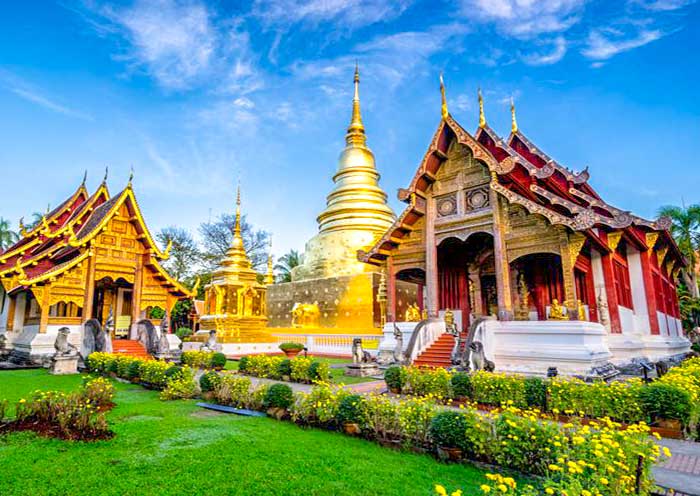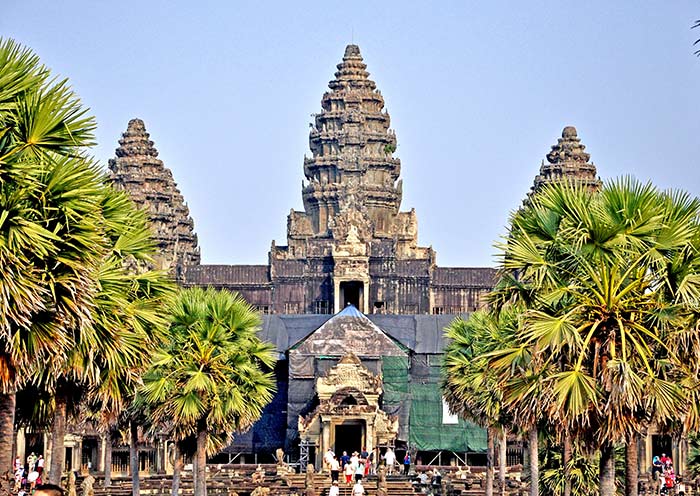Is it Safe to Travel to Vietnam & Cambodia?


Overall, Vietnam and Cambodia are considered safe travel destinations for tourists. However, as with any travel destination, it's important to take certain precautions and stay informed about the current situation. Here's an overview of the safety aspects:
Vietnam:
- Vietnam is generally a safe country for travelers. The crime rate is relatively low, and violent crimes against tourists are rare.
- Exercise normal precautions and be aware of your surroundings, especially in crowded areas or tourist hotspots where pickpocketing and petty theft can occur.
- Take precautions against scams, such as inflated prices, overcharging, or misleading tour offers. It's advisable to book tours and transportation through reputable agencies.
Cambodia:
- As in any country, be aware of your surroundings and keep an eye on your belongings, particularly in crowded areas and tourist sites.
- Exercise caution when using tuk-tuks or motorcycles as a mode of transportation, and ensure you choose reputable and licensed drivers.
- It's recommended to dress modestly, particularly when visiting religious sites, to respect local customs and traditions.
Both Vietnam and Cambodia have their own unique cultures, history, and natural beauty that attract millions of visitors each year. By staying alert, following common-sense safety practices, and being respectful of local customs, you can have a safe and enjoyable experience in these countries. It's always a good idea to stay updated on travel advisories and consult reliable sources for the latest information before your trip.
What to See in Vietnam and Cambodia
Vietnam and Cambodia, neighboring countries in Southeast Asia, offer unique and diverse travel experiences. Vietnam, with its expansive territory and coastline, provides a wide range of attractions and choices for tourists. Cambodia, although smaller in size, is dominated by the magnificent Angkor Wat. Let's explore the travel experiences each country offers:
Top Places to Visit In Vietnam
- Hanoi: Immerse yourself in the bustling streets of Vietnam's capital city, where ancient temples and vibrant markets coexist with French colonial architecture and delicious street food.
- Halong Bay: Discover the enchanting beauty of this UNESCO World Heritage Site, where limestone karst formations rise dramatically from turquoise waters. Explore hidden caves, cruise through the bay, and witness stunning sunsets.
- Sa Pa Terraced Rice Fields: Marvel at the breathtaking landscapes of terraced rice fields in Sa Pa, located in the northern mountains of Vietnam. The vibrant green fields create a stunning backdrop that is a photographer's dream.


- Hoi An: Step back in time in this charming ancient town, known for its well-preserved architecture, lantern-lit streets, and colorful riverside setting. Explore the lantern-filled lanes, visit historic sites, and indulge in local cuisine.
- Hue: Dive into Vietnam's imperial past in the city of Hue, with its grand citadel, royal tombs, and historic pagodas. Take a boat ride along the Perfume River and immerse yourself in the city's rich cultural heritage.
- Da Nang: A coastal city known for its beautiful beaches, modern skyline, and vibrant food scene. Enjoy the sandy shores of My Khe Beach, visit the iconic Marble Mountains with its caves and pagodas, and take a stroll along the Dragon Bridge, which breathes fire and water on weekends.

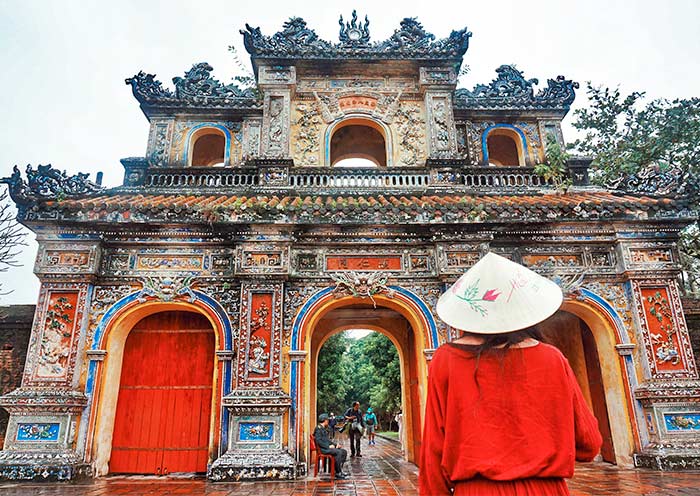
- Ho Chi Minh City: Experience the dynamic energy of Vietnam's largest city, formerly known as Saigon. Marvel at its modern skyscrapers, visit historic landmarks like the Cu Chi Tunnels, and indulge in the city's lively street food scene.
- Mekong Delta: Explore the lush and fertile region of the Mekong Delta, where floating markets, fruit orchards, and peaceful canals showcase the vibrant rural life of Vietnam. Take a boat tour and discover the unique ecosystem of this river delta.
- Phu Quoc Island: Vietnam's largest island, known for its pristine beaches, turquoise waters, and relaxed atmosphere. Enjoy water activities like diving, snorkeling, or simply relax on the beach.

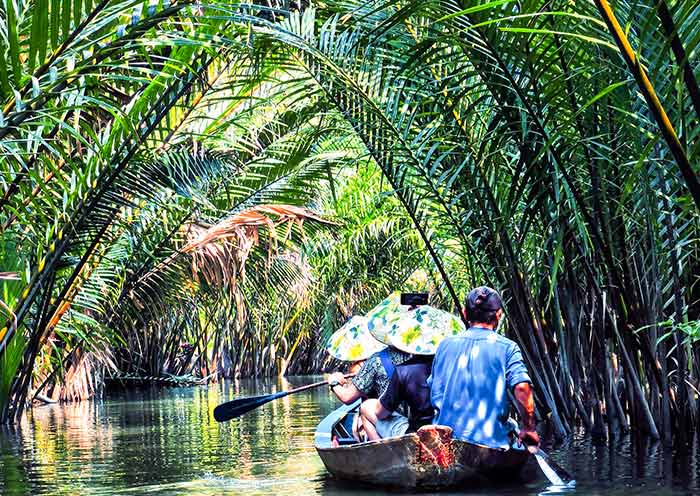
Best Attractions In Cambodia
- Angkor Wat Complex: The magnificent temple complex in Siem Reap is a must-visit. Witness the awe-inspiring sunrise over Angkor Wat, explore the ancient temples of Angkor Thom, and visit other nearby temples like Ta Prohm and Bayon.
- Phnom Penh: Cambodia's capital city offers a mix of history and modernity. Visit the Royal Palace, Silver Pagoda, and the sobering Tuol Sleng Genocide Museum. Take a sunset cruise along the Mekong River and explore the vibrant markets.
- Siem Reap: Discover the vibrant city of Siem Reap, the gateway to Angkor Wat, and explore its lively markets, traditional Khmer architecture, and rich cultural heritage. Take a boat tour on Tonle Sap Lake, Southeast Asia's largest freshwater lake, visit floating villages, and witness the unique way of life of the local communities.


These are just a few highlights, and both Vietnam and Cambodia offer much more to explore. Each country has its own unique attractions, historical sites, and natural wonders that promise an enriching and unforgettable travel experience.
Best Time to Visit Vietnam & Cambodia
The best time to visit Vietnam and Cambodia is generally from November to March, during the dry season.
Best Time to Visit Different Parts of Vietnam:
- Northern Vietnam (Hanoi, Halong Bay, Sapa): November to March offers cool and dry weather, making it pleasant for exploring cities, cruising in Halong Bay, and trekking in Sapa.
- Central Vietnam (Hoi An, Hue, Da Nang): November to March brings milder temperatures and less rainfall, creating comfortable conditions for exploring historic sites, enjoying the beaches, and participating in festivals like the Lunar New Year (Tet).
- Southern Vietnam (Ho Chi Minh City, Mekong Delta): This region is generally warm year-round, but November to March is the dry season, providing relief from the high humidity. It's a good time for city sightseeing and exploring the Mekong Delta.

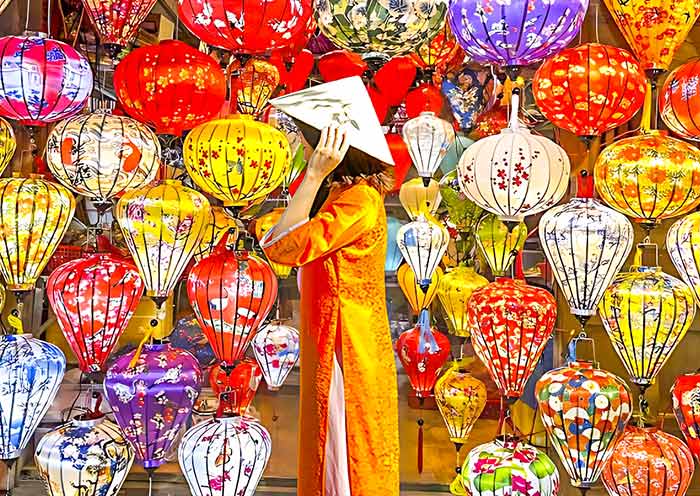
Best Time to Visit Angkor Wat, Cambodia:
- Angkor Wat (Siem Reap): November to March offers cooler and drier weather, making it more comfortable for exploring the temples of Angkor Wat and other archaeological sites.
During the dry season, you can expect pleasant temperatures, clear skies, and less rainfall, allowing for better visibility and outdoor activities. It's important to note that popular sites can get crowded during this period, especially around major holidays and festivals. Therefore, it's advisable to plan your visit in advance and be prepared for higher tourist numbers.
How Long to Spend in Vietnam and Cambodia
To fully experience Vietnam and Cambodia, it is recommended to spend at least 1-2 weeks in these countries.
Vietnam: For a comprehensive tour of Vietnam, including the major cities, natural wonders, and cultural sites, a minimum of 7-10 days is recommended. This allows you to explore Hanoi, Halong Bay, Hoi An, Hue, Ho Chi Minh City, and the Mekong Delta, among other destinations.
Cambodia: To explore the highlights of Cambodia, including Angkor Wat and other temples in Siem Reap, as well as Phnom Penh, a minimum of 3-4 days is recommended.
Combined Itinerary: If you plan to visit both Vietnam and Cambodia in one trip, a minimum of 10-14 days is ideal. This would allow you to allocate around 7-10 days for Vietnam and 3-4 days for Cambodia.
Recommended 10-day Itinerary
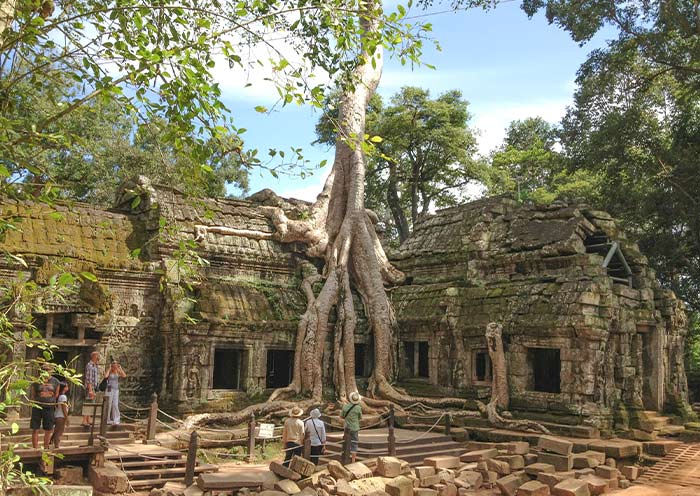
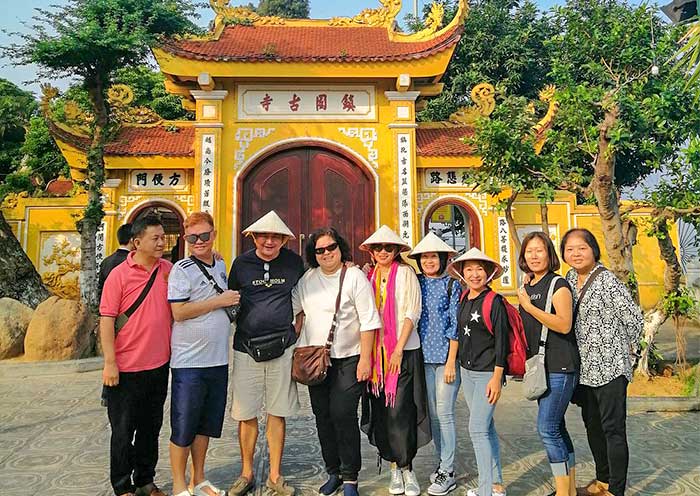
The Classic Vietnam & Angkor Wat itinerary is a great choice for first-time travelers to the region. Here is a summary of the itinerary:
Day 1: Arrival in Hanoi, Vietnam
- Arrive in Hanoi and check into your hotel.
Day 2: Hanoi City Tour
- Take a guided tour of Hanoi, exploring popular attractions and landmarks.
Day 3: Hanoi - Halong Bay - Overnight Cruise
- Travel from Hanoi to Halong Bay and embark on an overnight cruise.
- Enjoy the stunning scenery and activities on the bay.
Day 4: Halong Bay - Hanoi - Fly to Da Nang - Hoi An
- Continue your cruise in Halong Bay.
- Return to Hanoi and fly to Da Nang.
- Transfer to Hoi An and check into your hotel.
Day 5: Hoi An Sightseeing
- Explore the charming town of Hoi An, known for its ancient architecture and lantern-lit streets.
Day 6: Hoi An - Da Nang - Fly to Ho Chi Minh City
- Depart from Hoi An and fly to Ho Chi Minh City.
- Check into your hotel and spend the evening at your leisure.
Day 7: Ho Chi Minh City - Mekong Delta Tour
- Take a day trip to the Mekong Delta, experiencing the floating markets and local life.
Day 8: Ho Chi Minh City Morning Explore and Flight to Siem Reap
- Explore Ho Chi Minh City in the morning, visiting key attractions.
- Fly to Siem Reap, Cambodia, and check into your hotel.
Day 9: Angkor Complex Exploring
- Spend the day exploring the magnificent Angkor Archaeological Park, including Angkor Wat and other temples.
Day 10: Siem Reap Departure
- Enjoy some last-minute exploring or shopping in Siem Reap before departing.
This itinerary provides a well-rounded experience of Vietnam and Cambodia, including cultural exploration, natural wonders, and historical sites. It covers the highlights of Hanoi, Halong Bay, Hoi An, Ho Chi Minh City, and the Angkor temples in Siem Reap.
How Much Does it Cost for Vietnam & Cambodia Trip
The tourism consumption in Cambodia and Vietnam is relatively low among the many popular destinations in Southeast Asia. Whether it is ticket admission fees, consumption of tourist activities, or even accommodation and catering costs, they will be cheaper than neighboring countries such as Thailand and Singapore. Vietnam is rich in tourism resources and has many beaches and entertainment activities, such as basket boat, overnight cruise, and abundant amusement parks, which are very suitable for traveling with children. In Angkor Wat, the relatively concentrated destinations will also greatly reduce travel costs.
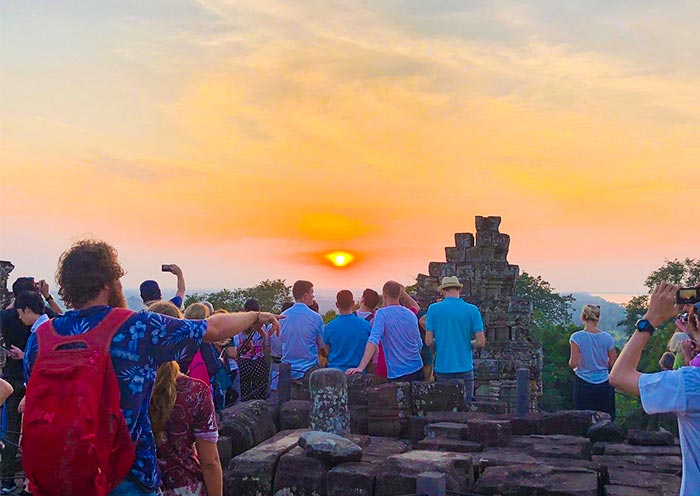

Factor to Consider
- Travel Style: Budget backpacker, mid-range traveler, or luxury explorer? Each style comes with different spending expectations.
- Travel Duration: A longer trip naturally translates to higher costs.
- Travel Time: Traveling during peak seasons (Nov - Mar) usually means higher cost.
- Accommodation: Hostel dorms, guesthouses, boutique hotels, or luxury resorts will significantly impact your daily spending.
- Transportation: Buses, trains (limited in Vietnam-Cambodia travel), domestic flights, taxis, or private drivers all have varying costs.
- Activities: Entrance fees for temples, tours, cruises, diving trips, etc., will add up depending on your chosen experiences.
- Food: Street food is incredibly affordable, while high-end restaurants will cost more.
Cost for Different Travelers
- Budget Travel: $50-80 per day
This would cover basic accommodation in budget guesthouses, local street food or inexpensive meals at local restaurants, public transportation, and sightseeing at popular attractions.
- Mid-Range Travel: $80-150 per day
This includes staying in mid-range hotels or guesthouses, dining at a mix of local and mid-range restaurants, using a combination of public transportation and occasional private transfers, and participating in guided tours or activities.
- Luxury Travel: $150 or more per day
This would include staying in upscale hotels or resorts, dining at high-end restaurants, using private transfers or domestic flights for transportation, and indulging in premium experiences or exclusive tours.
Tips for Saving Money
- Travel during the shoulder seasons (April-May, September-October).
- Choose budget-friendly accommodation options like hostels or guesthouses.
- Utilize public transportation whenever possible.
- Eat street food - it's delicious and affordable!
- Shop around for tours and prices before booking.
- Consider getting a travel pass for discounted entrance fees to attractions.
By planning and budgeting effectively, you can have a fantastic trip to Vietnam and Cambodia that fits your financial comfort zone.
How to Get to Vietnam and Cambodia


To get to Vietnam and Cambodia, there are several options available depending on your starting location. Here are some common methods of transportation:
By Air:
The most convenient and popular way to reach Vietnam and Cambodia from international destinations is by air. Both countries have major international airports that receive flights from various parts of the world.
For Vietnam:
- Noi Bai International Airport (HAN) in Hanoi
- Tan Son Nhat International Airport (SGN) in Ho Chi Minh City
- Da Nang International Airport (DAD) in Da Nang
For Cambodia:
- Phnom Penh International Airport (PNH) in Phnom Penh
- Siem Reap Angkor International Airport (SAI) in Siem Reap
Numerous airlines operate flights to these airports, including both full-service carriers and low-cost airlines. You can check with airlines or travel websites for available flights and prices.
By Land:
If you are traveling from neighboring countries or prefer overland transportation, you can consider crossing the borders into Vietnam and Cambodia.
Vietnam:
- From China: There are border crossings between Vietnam and China, including the Friendship Pass in the north.
- From Laos: The most popular border crossings are at Dien Bien Phu, Cau Treo, and Tay Trang.
- From Cambodia: The Moc Bai/Bavet border crossing connects Vietnam and Cambodia.
Cambodia:
- From Thailand: The most widely used border crossings are at Poipet/Aranyaprathet and Koh Kong/Hat Lek.
- From Laos: The border crossing at Veun Kham/Dong Kralor is a common route.
By Water:
Another option to reach Vietnam or Cambodia is by cruise or ferry, particularly if you are coming from nearby countries such as Thailand or Malaysia. There are various cruise lines that offer routes to Vietnam and Cambodia, with popular ports of call including Ho Chi Minh City and Phnom Penh.
It's important to check visa requirements and travel advisories for both Vietnam and Cambodia before making your travel arrangements. Ensure that you have the necessary visas or visa-on-arrival letters, and comply with any entry requirements set by the respective countries.


Visa Requirements to Travel to Vietnam and Cambodia
Visa requirements for traveling to Vietnam and Cambodia vary depending on your nationality. Here's an overview of the visa requirements for most travelers:
Vietnam:
- Visa Exemption:
Some nationalities are exempt from requiring a visa for a certain period. The allowed duration varies, usually ranging from 14 to 90 days. However, it's important to check the specific visa exemption rules for your nationality follow the below table.
| Country | Maximum Stay | Country | Maximum Stay | Country | Maximum Stay |
|---|---|---|---|---|---|
| Belarus | 45 | South Korea | 45 | Kyrgyzstan | 30 |
| Denmark | 45 | Spain | 45 | Laos | 30 |
| Finland | 45 | Sweden | 45 | Malaysia | 30 |
| France | 45 | United Kingdom | 45 | Mongolia | 30 |
| Germany | 45 | Russia | 45 | Indonesia | 30 |
| Italy | 45 | Chile | 90 | Philippines | 21 |
| Japan | 45 | Panama | 90 | Brunei | 14 |
| Norway | 45 | Cambodia | 30 |
- Visa on Arrival
If you are not eligible for visa exemption, you can obtain a visa on arrival. This requires pre-arranging a visa approval letter through a travel agency or online service before your trip. Upon arrival at one of Vietnam's international airports, you will present the approval letter, pay the visa stamping fee, and receive your visa.
- E-Visa:
Vietnam also offers an electronic visa (e-visa) option for citizens of certain countries. This allows you to apply for a visa online before your trip and receive an electronic visa document, which you present upon arrival to get your visa stamped.
Cambodia:
- Visa on Arrival
Most nationalities can obtain a visa on arrival at the airports and land border crossings in Cambodia. Upon arrival, you will need to complete an application form, provide a passport-sized photo, and pay the visa fee in cash (in US dollars). The visa on arrival is usually valid for 30 days.
- E-Visa
Cambodia also offers an electronic visa (e-visa) option, which allows you to apply online in advance. You will receive an electronic visa document that you present upon arrival to have your visa stamped.
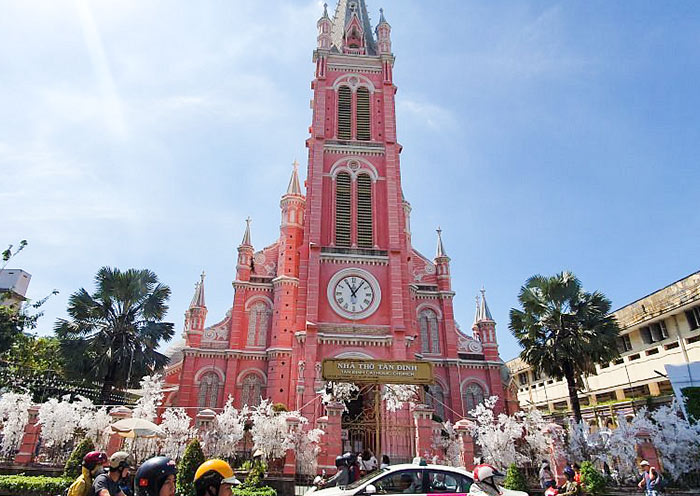

What to Eat in Vietnam and Cambodia
When traveling to Vietnam and Cambodia, it's highly recommended not to miss the chance to indulge in the local cuisine. Similar to Thailand, the local food in these countries incorporates a wide array of spices that create a delightful explosion of flavors on your taste buds. Don't hesitate to try the diverse street food and traditional dishes that showcase the unique culinary heritage of each region. Additionally, if you have the opportunity, consider participating in a cooking class offered in our tour package. It's a fantastic way to uncover the secrets behind Vietnamese food and learn firsthand how to recreate these amazing flavors.
Vietnamese Food
Vietnamese cuisine is characterized by its fresh and light flavors, incorporating a wide array of herbs, vegetables, and raw ingredients. The taste is a delicate balance of sweet, sour, and savory elements, with dishes often featuring a harmonious blend of flavors.
Dishes You Must Try in Vietnam
- Pho: A famous Vietnamese noodle soup made with beef or chicken, rice noodles, and aromatic herbs. It's a staple dish and a must-try when visiting Vietnam.
- Banh Mi: A Vietnamese sandwich made with a crispy baguette, filled with various ingredients like grilled meats, pâté, pickled vegetables, and fresh herbs. It's a delicious and satisfying street food option.
- Bun Cha: Grilled pork served with rice noodles, fresh herbs, and a dipping sauce. It's a specialty in Hanoi and is known for its smoky flavors.
- Fresh Spring Rolls (Goi Cuon): Rice paper rolls filled with a combination of fresh herbs, vegetables, shrimp or pork, and sometimes noodles. They are served with a peanut dipping sauce.
- Cao Lau: A specialty dish from Hoi An, consisting of thick rice noodles, slices of pork, fresh herbs, and crispy croutons, all served in a flavorful broth.
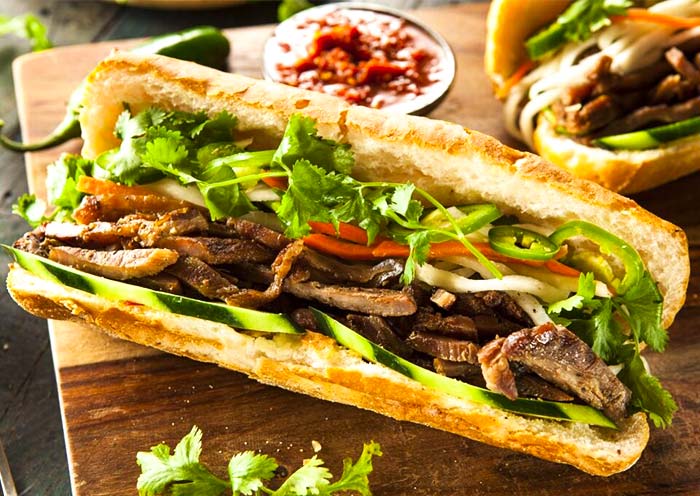
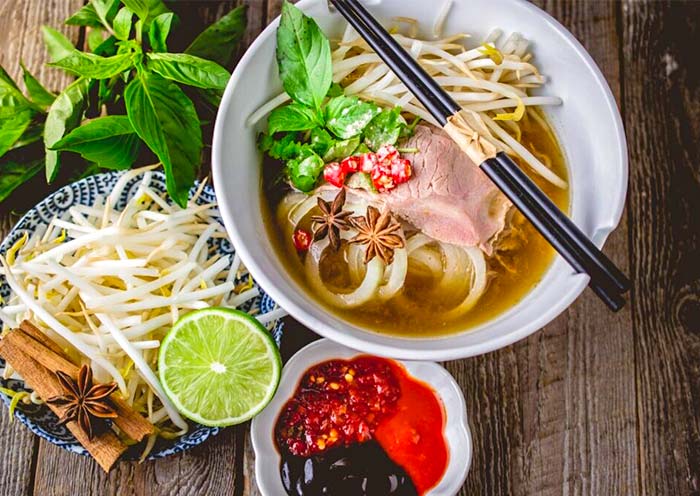
Cambodian Food:
Cambodian cuisine offers a bold and diverse taste experience, featuring a combination of spicy, tangy, and savory flavors. With a focus on incorporating local spices and herbs, Cambodian dishes often have a distinct earthiness and aromatic quality.
Dishes You Must Try in Cambodia
- Amok: A popular Cambodian dish made with fish or chicken, cooked in a rich and creamy coconut curry sauce, and steamed in banana leaves. It's a flavorful and aromatic dish.
- Lok Lak: Marinated beef or chicken stir-fried with onions, served on a bed of lettuce, tomatoes, and cucumbers. It's often accompanied by a tangy dipping sauce.
- Fish Amok: Similar to the traditional amok, but made with fish instead. It's a delicate and creamy fish curry dish, steamed in banana leaves.
- Nom Banh Chok: A traditional breakfast dish in Cambodia, consisting of rice noodles topped with a fish-based green curry sauce and an assortment of fresh vegetables.
- Bai Sach Chrouk: Grilled pork served over rice with pickled vegetables and a side of broth. It's a popular breakfast option in Cambodia.
Where to Stay Overnight in Vietnam and Cambodia
Vietnam and Cambodia offer a range of accommodation options to suit different preferences and budgets. Here are some popular destinations where you can find suitable places to stay:
Vietnam:
- Hanoi: Consider staying in the Old Quarter or Hoan Kiem District to experience the bustling atmosphere and be within walking distance of attractions like Hoan Kiem Lake and the Temple of Literature.
- Ho Chi Minh City: District 1 is a popular area to stay, offering a central location with easy access to landmarks like Ben Thanh Market and the Notre-Dame Cathedral. Pham Ngu Lao Street in District 3 is known for its vibrant backpacker scene.
- Hoi An: Choose accommodations within Hoi An's Ancient Town to immerse yourself in its charming atmosphere. Many hotels and guesthouses are located along the narrow streets, allowing for easy exploration of the town's historic sites.
- Ha Long Bay Cruise: Overnight cruises in Ha Long Bay typically provide comfortable and well-equipped cabins with private bathrooms. The cabins often have large windows or balconies, allowing you to enjoy the breathtaking views of the bay from the comfort of your room.
Cambodia:
- Siem Reap: Stay near Siem Reap's city center to have easy access to the famous Angkor Wat temples. There are also luxury resorts located a bit further from the center, offering a tranquil retreat.
- Phnom Penh: Consider accommodations along the riverside promenade for picturesque views and proximity to landmarks like the Royal Palace and National Museum.

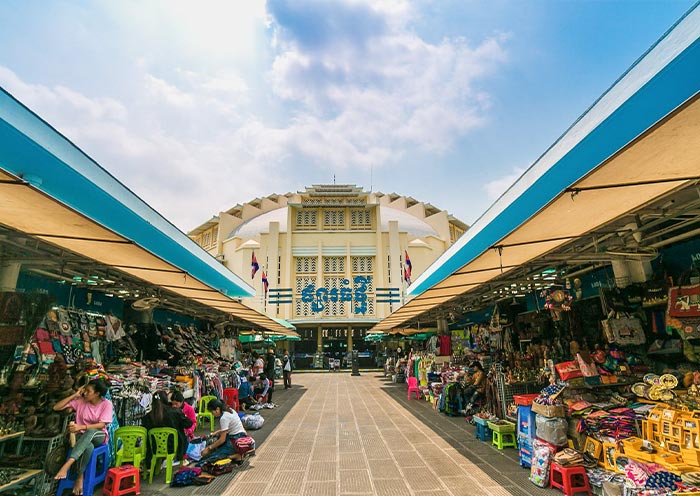
Travel with AOT to Explore Cambodia & Vietnam in Southeast Asia
Vietnam and Cambodia are two cost-effective travel destinations in Southeast Asia that offer a diverse range of activities and experiences. While Vietnam has often been overlooked by tourists, it stands out with its unique culture, cuisine, and affordable travel options. Cambodia, known for its mysterious Angkor Wat, is worth a visit as well, even though it's often used as a transit point to neighboring countries.
At AOT, we provide a wide range of itineraries to these captivating destinations, allowing you to choose the one that best suits your travel interests and time constraints. Our offerings include individual destination options such as Cambodia Tours, Angkor Wat Tours, Vietnam Tours, Northern Vietnam Tours, Central Vietnam Tours, and Southern Vietnam Tours. Additionally, we provide cross-border tour packages that combine both Vietnam and Cambodia, such as the Vietnam Cambodia Tours.
However, our destinations extend beyond Vietnam and Cambodia. Thailand and Laos are equally popular on our list of travel hot spots. If you're interested in exploring tour packages in Southeast Asian countries, we invite you to explore our Southeast Asia Tour Packages for a comprehensive selection of options.
With our expertise and diverse range of destinations, AOT can help you create memorable and cost-effective travel experiences throughout Southeast Asia.






